Calculating the lumens and watts needed to illuminate a room is an essential element to ensure that the lighting is adequate for the setting and is neither too dim nor too intense.
Before delving into this topic technically, let's spend a few minutes defining these two types of units.
The lumen refers to the emission of luminous flux, which corresponds to the measure of the entire quantity of visible light released by a source per unit of time. If one candela of luminous intensity is emitted evenly across a solid angle of one steradian, the total luminous flux emitted into that angle is one lumen.
That is, lumen depends on the surface that will be illuminated and the intensity of the light called lux.
It follows that: lumen = lux x mq.
Therefore, being aware of the ideal light intensity and surface size for each room you intend to illuminate, you can determine how many lumens each room needs and, consequently, find the most suitable light bulb or light installation.
Watt, on the other hand, is the indicator of power in the International System, known in everyday use for its use in the field of electricity.
In this article, we will look into:
- What is the relationship between lumens and watts?
- Energy needs for every environment
- Different types of lamps for different types of emissions
- How do you calculate how many lumens are needed to light a room?
- The best type of lighting for every room
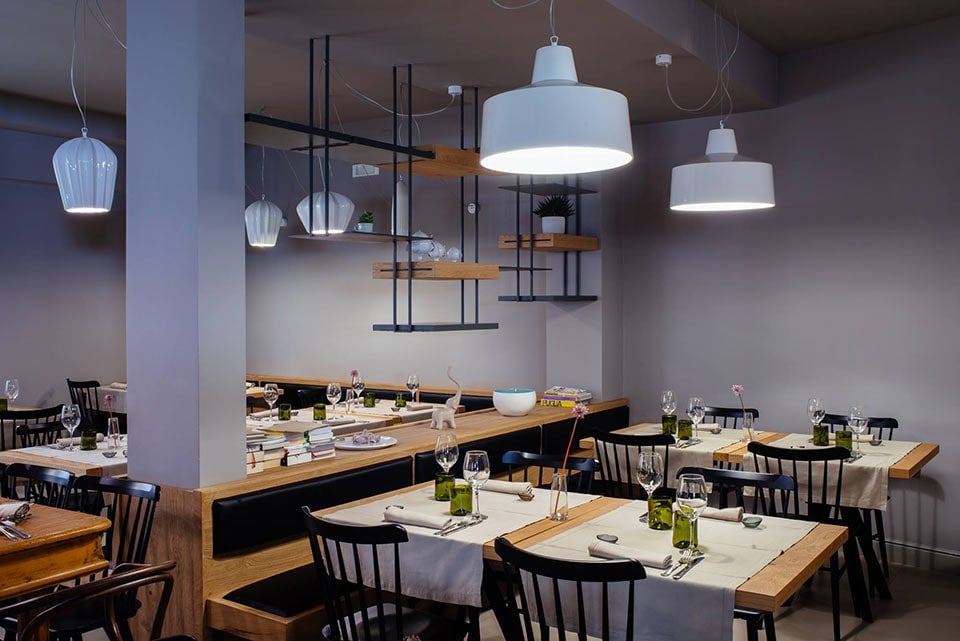
Gangster
What is the relationship between lumens and watts?
The ratio between lumens and watts refer to, respectively, the efficiency and effectiveness of a light bulb. Therefore, the correspondence between lumens and watts depends on the type of bulb you use: incandescent, LED, halogen or fluorescent.
Let's look at some ratios between lumens and watts, referring to the most common measurements of environments and their corresponding lumens.
If the space involved requires 450 lumens, the watt ratio between the various types of light bulbs will be:
- incandescent = 40 W
- halogen = 29 W
- fluorescent = 9 W
- LED = 8 W
For spaces that require 800 lumens:
- incandescent = 60 W
- halogen = 43 W
- fluorescent = 14 W
- LED = 13 W
For spaces that require 1100 lumens:
- incandescent = 75 W
- halogen = 59 W
- fluorescent = 19 W
- LED = 17 W
Finally, for spaces that require 1600 lumens:
- incandescent = 100 W
- halogen = 72 W
- fluorescent = 23 W
- LED = 20 W
Now that we have defined the units of measurement needed in the evaluation of a perfectly illuminated space, let’s move on to dealing with how many lumens each room needs based on its structure.
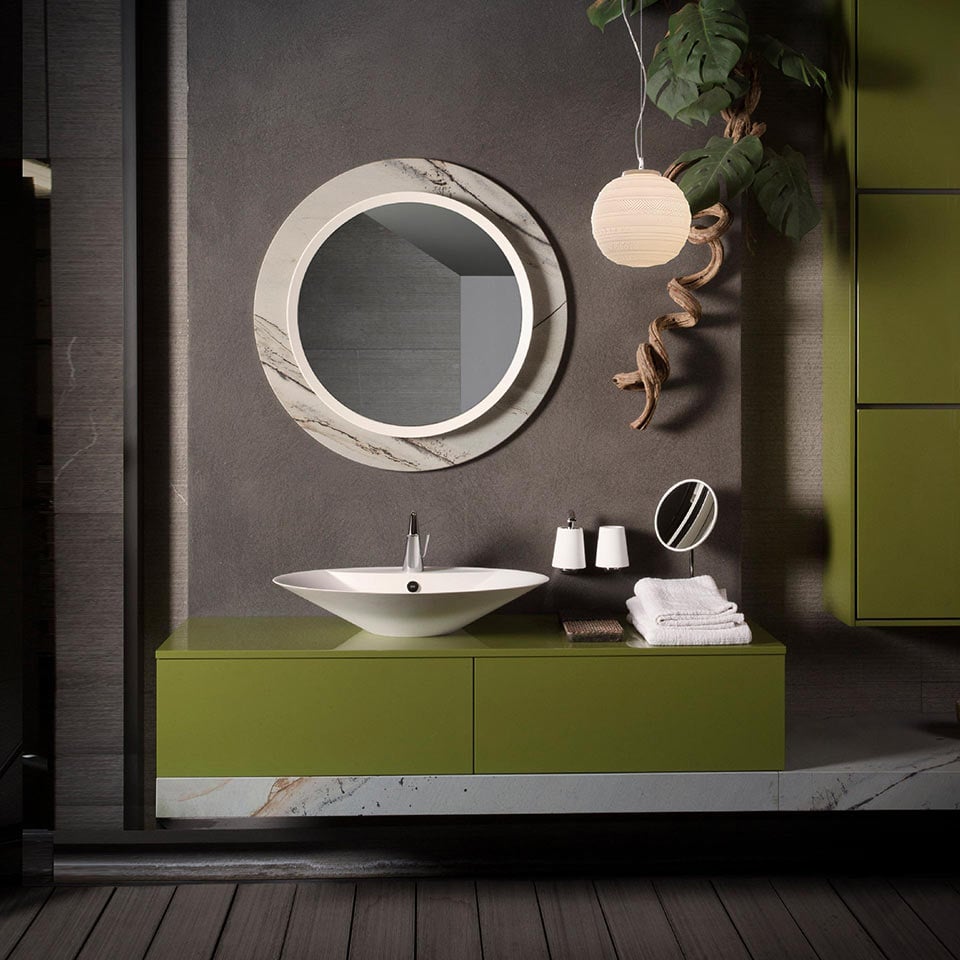
Braille
Energy needs for every environment
We have seen that Lux refers to the intensity of light per square meter; we use this parameter to calculate the lumens needed for the various rooms in the home.
No matter the area you illuminate, always keep in mind what kind of visibility you want the specific environment to have, paying attention to the function of the space in question.
For example, if you intend to illuminate a studio, you know that this area requires excellent visibility, so the lux coefficient must be equal to or greater than 300.
If, on the other hand, you intend to illuminate a room used for relaxation, for example, a living room, for a particular ambient effect that puts you at ease, you do not need to have perfect visibility, so you can consider choosing a coefficient of lux between 150 and 200.
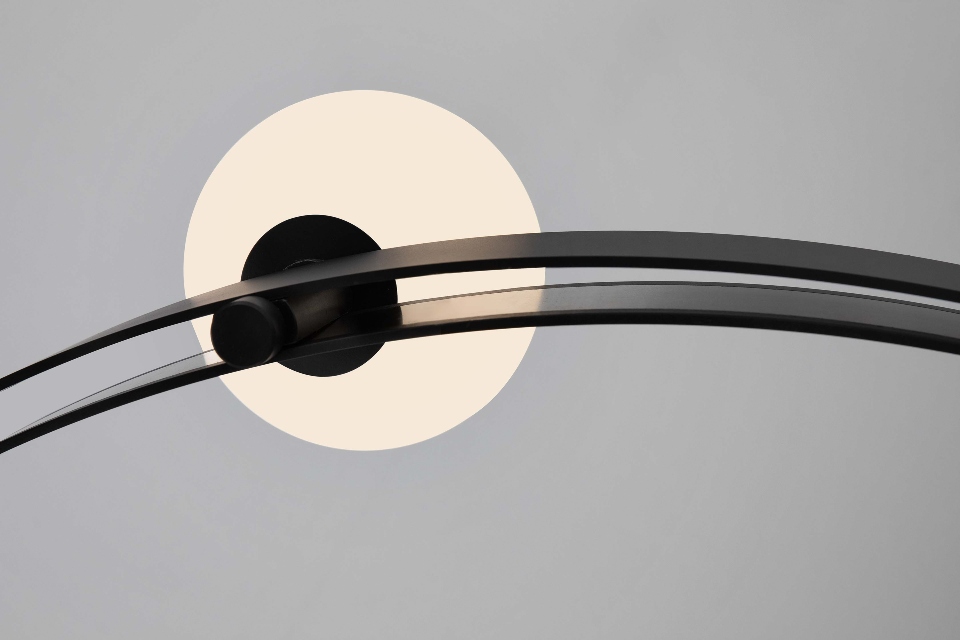
Stant
Once you have identified the right type of optimal visibility for each room based on its function, you can draw up an indicative list of the different values of lux, a generic reference list concerning your specific lighting needs for the personalisation of each environment:
- The kitchen area, due to the functional practicality of this environment, requires 350 lux;
- The living area, of a less practical nature, a room for relaxation and recreational activities, requires 200 lux;
- The bedroom, the area with the softest, most restful, conciliatory light, requires between 100 and 150 lux;
- The bathroom, another practical and functional area, requires two reference values, a generic light and a specific one for the mirror, as this tool requires perfect visibility, being useful, for example, for shaving or putting on makeup. For these reasons, the generic reference value is 150 lux, while the specific value of the mirror is 400 lux;
- The passageways, such as the corridor and the stairwell, need excellent visibility but not intense light; therefore, these environments also need a value of 150 lux;
- Rooms like the study and workplaces in general, requiring excellent visibility, as we have already seen, need from 300 to 400 lux;
- As for areas such as garages, closets and storage rooms, given their function, you can stay on a value of 100 lux, unless you use one of these environments, such as the garage, for example, for something more functional, like manual work or other activities that still require more optimal visibility. In this case, you can consider a value of around 200 lux, always taking into account the surface that covers the space concerned.
Trace the indicative lines about the lux coefficients generally optimal for each type of room. Let's take a deeper look at the energy emissions for the various types of lamp.
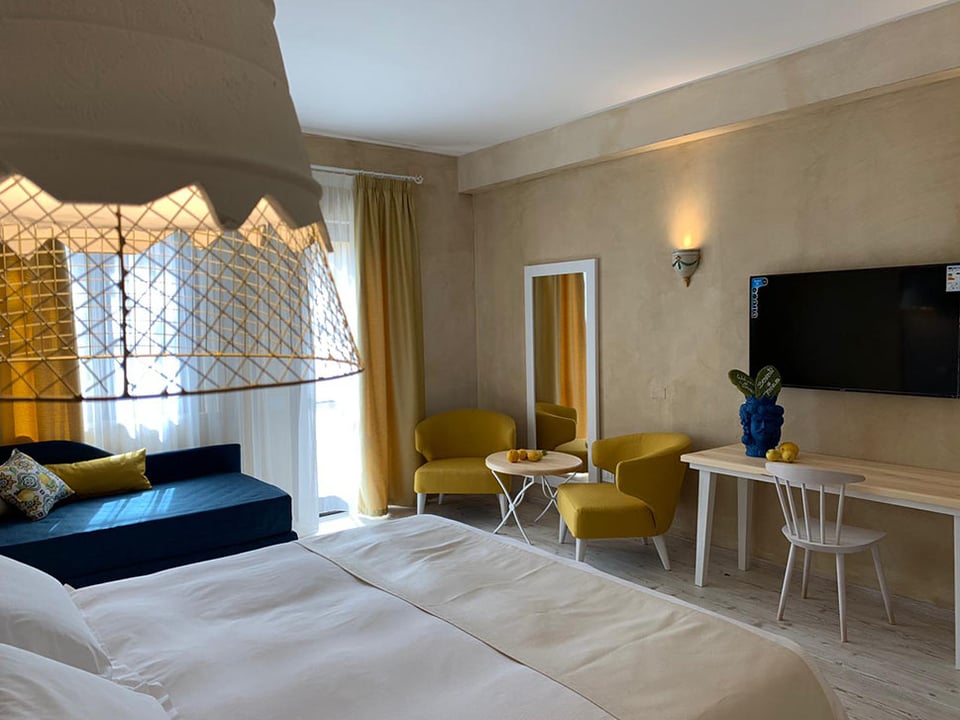
Domenica
Different types of lamps for different types of emissions
Each type of lamp has specific characteristics and energy emissions: knowing these characteristics is an indispensable aid in understanding which type of lamp works with one environment rather than another.
Many people often set up lamps and installations in various rooms without meeting a real criterion, making false steps that result in weak lighting due to the low yield of the lamp.
So you don’t make the same mistake, let's analyse the different types of lamps, assessing their characteristics and emissions.
Halogen incandescent lamps
These lamps have been created to overcome the limits of traditional incandescent lamps, that is, low efficiency and a short life span, and have been used above all in shop windows and stores, exhibitions and museums.
Today these lamps are an excellent solution for illuminating work tables and study areas and are available in a wide variety of shapes and potencies.
Halogen incandescent lamps are divided into two large families:
1. Very low voltage lamps (that is to say the spotlights) of 6-12-24V, which require a transformer for connection to the 230V grid.There are two types:
a) lamps without a reflector, suitable for light installations with very small dimensions, to create atmospheric lighting, such as "starry sky" ceilings, for example
b) reflector lamps, which have a life span ranging from 4,000 to 5,000 hours, or almost twice as much as conventional halogen lamps.
2. Mains-voltage bulbs, which can be installed directly, without the need for transformers.
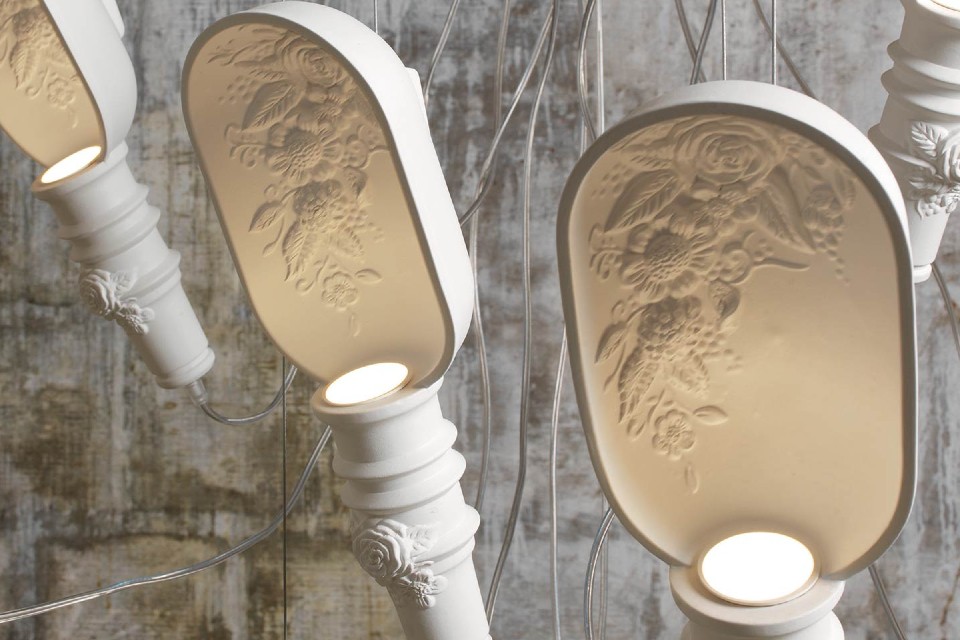
Work in progress
These types of bulbs are available in various wattages in Edison-type screw connections and can be used in the place of traditional linear incandescent light bulbs. Moreover, due to the double connection, they must be used in light installations that have a front glass.
In addition, you can find a type of IRC-type halogen bulb, otherwise called "energy-saving": low-voltage bulbs that need a transformer to function.
The acronym IRC is the acronym of "Infrared coating", which refers to the fact that they are equipped with a reflector that reflects the heat from the filament back to the filament, thus requiring less energy to bring the bulb to the ideal temperature.
In comparison with traditional halogen lamps, IRCs consume less energy, disperse less heat, last longer and have a greater and constant luminous flux over time.
The characteristics of the halogen lamp enhance its luminous efficiency to a value of around 15-20 watts which, together with its average duration of about 2000 hours, allow for better performance than traditional lamps.
This lamp, in fact, gives off a white light that allows an excellent colour rendering, without the bulb running the risk of blackening, and you can adjust the flow of light through the use of a simple dimmer switch.
The sore notes of this lamp concern factors that may or may not be relevant, depending on the type of use: they are fragile and have a high heat emission.
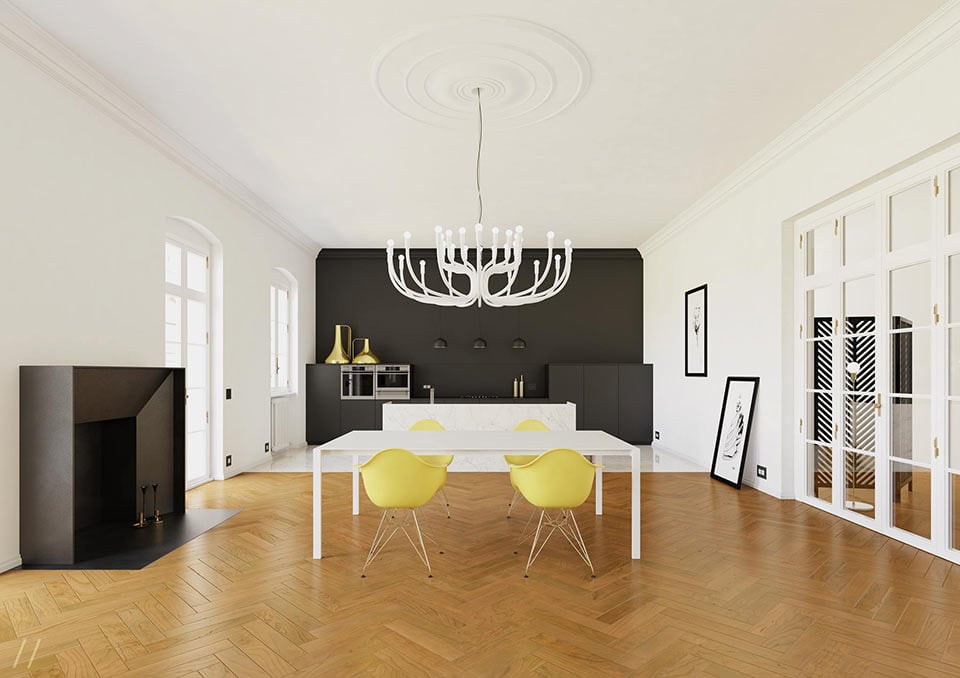
Snoob
Fluorescent lamps
Fluorescent lamps are formed by a glass tube internally lined with a layer of special fluorescent powders; this tube contains low-pressure mercury vapour.
At the ends, there are two electrodes which, when the current passes, generate an electric discharge which produces the emission of luminous radiations.
These lamps require a reactor to operate, which is used to limit the intensity of the current.
In the presence of a traditional reactor, you will also need a starter through which the electrodes are preheated to facilitate ignition; if, on the other hand, the reactor is electronic, the starter is not necessary.
Fluorescent lamps are suitable for illuminating indoor and outdoor environments, where prolonged use of light is most appropriate, and without frequent switching on and off.
Moreover, they have high luminous efficiency and a long life span: if used appropriately, replacing them with traditional incandescent lamps, fluorescent lamps will allow you to reduce electricity consumption by up to 70%.
Depending on the type of reactor they need, performance and size, these lamps are divided into two categories.
Tubular fluorescent lamps
They are the famous “neon" lights, which can be linear or circular in shape and, depending on the diameter, can be T5, 16 mm or T8 26 mm.
Mainly used in environments such as offices, schools and commercial areas, these tubular lamps have a high luminous efficiency: from 50 to 120 lumens/watt, that is 4 to 10 times greater than that of incandescent lamps. They enjoy a longevity equal to 10,000 hours, or about 10 times longer than incandescent lamps. This figure is significantly subject to the number of intervals between switching on and off: intervals of less than 15 minutes greatly affect the life of the lamp.
The fact that it cannot be directly connected to the electrical source could be a disadvantage, even if a dimmer, a particular electronic reactor, is used to adjust the luminous flux from 10 to 100%.
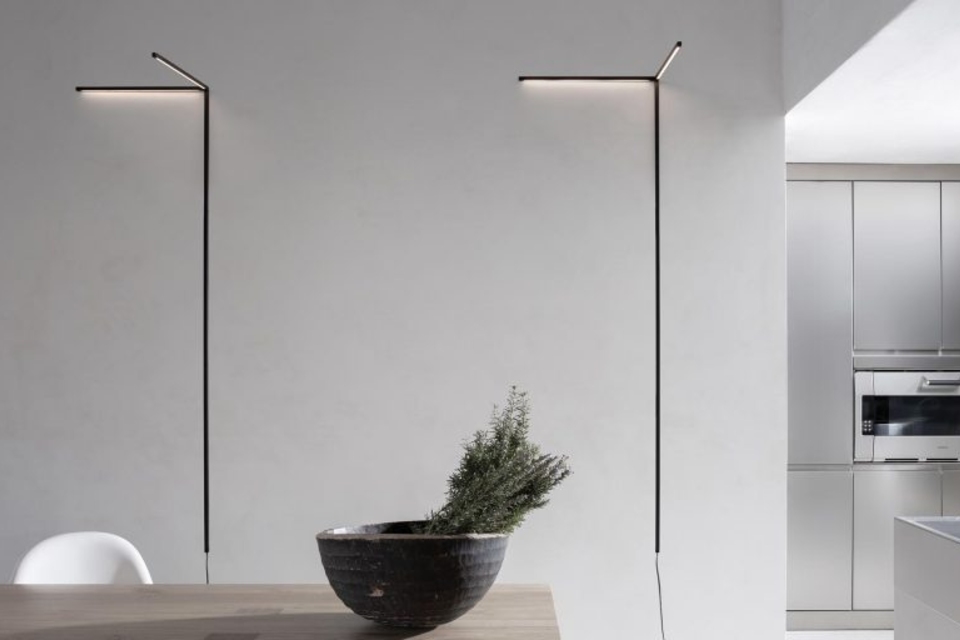
Y
Compact fluorescent lamps
They are commonly known as energy-saving lamps and, despite having dimensions and shades of light similar to those of incandescent lamps, their efficiency and longevity are considerably higher.
You can find these lamps with an integrated reactor or without an integrated reactor: the first ones, which can have a more efficient conventional or electronic type reactor, can be replaced without any problems with incandescent lamps since they are supplied with an Edison E27 screw base, or a Mignon E14 connection.
Compact fluorescent lamps have a luminous efficiency ranging from 50 to 75 lumens/watt, or 4 to 7 times higher than that of incandescent lamps, and a duration of about 10,000 hours, which is about 10 times greater than its incandescent competitors.
As with neon lights, the lifetime of these lamps is also sensitive to quickly and frequently switching them on and off, with intervals of less than 15 minutes.
They are particularly suitable for lighting indoor and outdoor environments that require prolonged use of light, and their colour rendering is greater than 80/100.
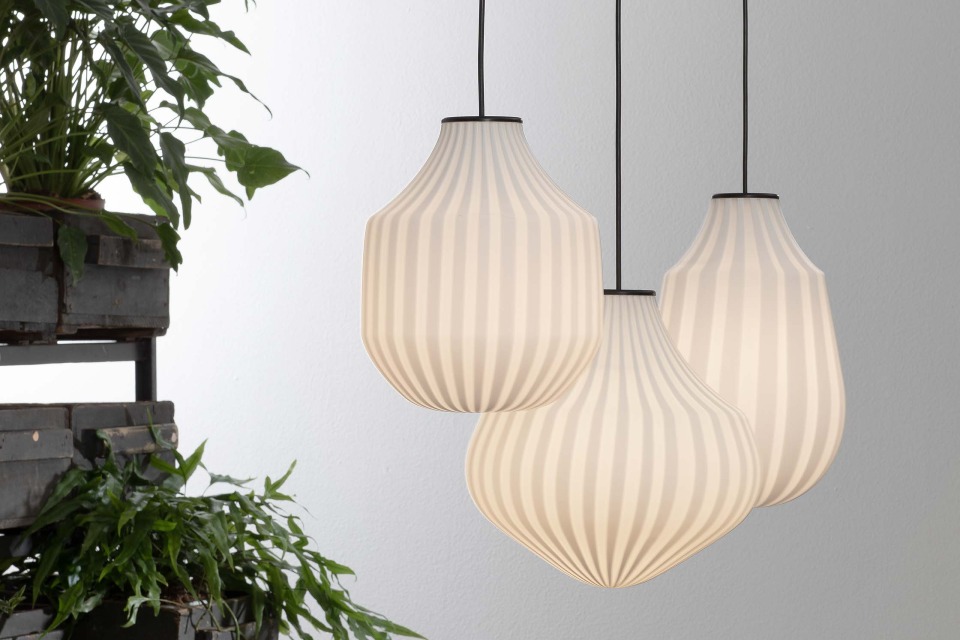
Circus
LED
LED is an acronym that stands for "Light Emitting Diodes" or "Light-emitting diodes" and have been used for years in the field of standard electronics, such as remote controls, stand-by indicators on TVs and in various appliances, etc.
Nowadays, you can see them in traffic lights, in the position lights and stoplights of vehicles, in displays, in decorative lighting and so on.
LEDs allow you to save up to 80% of electricity compared to that of a normal incandescent lamp, with the same amount of light emitted, with a longevity of up to 100,000 hours, in spite of only 1,000 of one incandescent bulb and the 10,000 of a fluorescent lamp.
Having analysed the characteristics and energy emissions of the various types of lamps, all that remains is to understand how to calculate the lumens needed in a room.
Want to always have with you the most useful resources and tools for architects and lighting designers? Download the full list below
How do you calculate how many lumens are needed to light a room?
Lighting in a living room or bedroom, as we saw earlier, requires lower levels of light than required, for example, in an office environment.
Determining the lighting levels for each room is useful both for convenience and efficiency.
Generally, you should use bright lighting to illuminate the most practical rooms, where activities that need excellent light are carried out, such as the kitchen or the dining room.
Once you have decided how bright a room must be, based on how it is used, calculating lumen levels is a fairly simple task that requires 2 main steps.
1. Length X width
The first step is to measure the length and width of the room using a tape measure, then multiply the two values to determine the square footage of the room. For example, a room 10 meters high and 15 meters wide will have an area of 150 square meters.
2. Standard lighting level
The next step is to examine the specific area you intend to illuminate, to determine the level of illumination; there are standards, which vary according to the reference State, that establish the ideal lighting level for each structure and environment.
You can review the current regulations for the environment you intend to illuminate by visiting this website.
The luminous flux is nothing but the power of the light produced by a lamp, which corresponds to the total lumens produced by a light source.
For example, a great LED lamp can reach at least 60 lumens and can even go up to 90 and 100 lumens, in some cases.
The current regulations indicate that to illuminate an office, for example, we recommend about 300-400 lumens per square meter of surface. Therefore, if your goal is to illuminate an area used as an office whose surface is 100 square meters, the light potency you will need will be around 30,000-40,000 lumens.
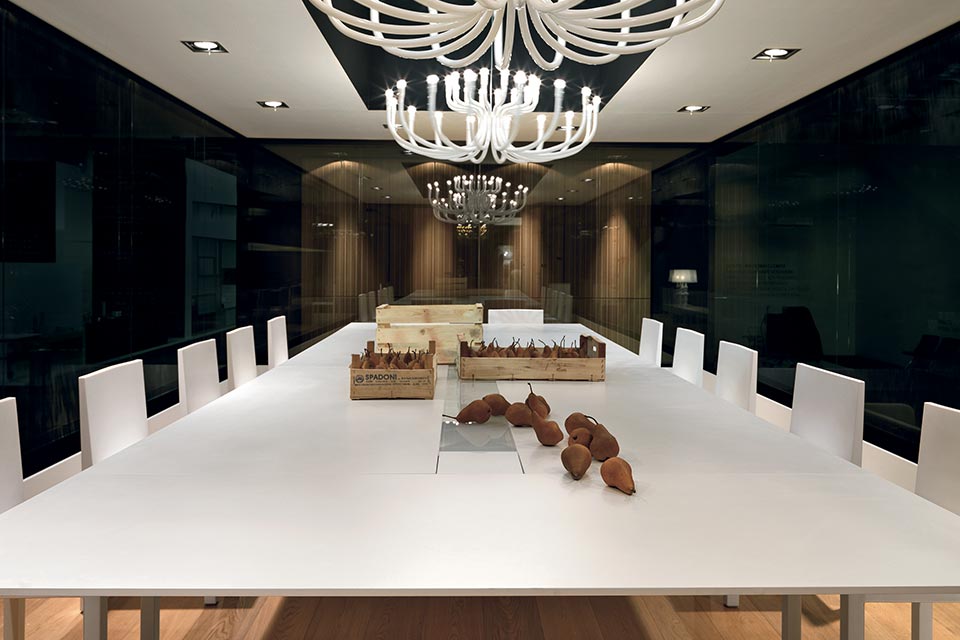
Snoob
The best type of lighting for every room
Below, you can examine the list of values that are legally recommended per square meter, calculated in lux (= lumens per square meter). These values do not only concern the various housing areas that we have analysed in this article but also the spaces that are part of industrial and commercial structures so you can get a general picture of the ideal lighting for each setting.
Civil Lighting
- Passageways = 50 - 150 lux
- Reading Zone = 200 - 500 lux
- Kitchen = 200 - 500 lux
- Bathroom = 100-150 lux; Mirror = 400 lux
- Bedrooms = 50-150 lux
Commercial Lighting
- General offices = 300 - 400 lux
- Offices for technical activities = 400 - 500 lux
Industrial Lighting
- General warehouses = 150 lux
- Warehouses for specific activities (e.g., welding) = 300 lux
At this point, you have all the data and factors you need to calculate the values concerning the illumination of any environment.
Always remember that the intensity of light in each setting depends on its intended use. Therefore, before making all the necessary calculations, define the atmosphere you want to give to each space.
Once this has been determined, all you have to do is continue following the indications analysed in this article.
Want to always have with you the most useful resources and tools for architects and lighting designers? Download the full list below



